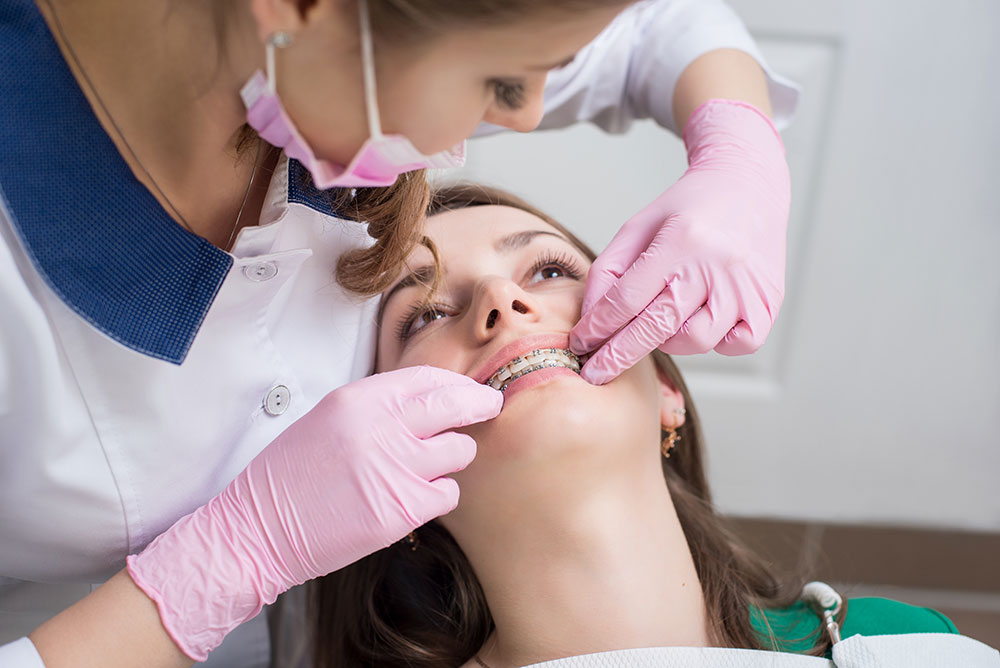Getting My Legacy Orthodontics To Work
Getting My Legacy Orthodontics To Work
Blog Article
About Legacy Orthodontics
Table of ContentsThe Best Strategy To Use For Legacy OrthodonticsThe Facts About Legacy Orthodontics RevealedMore About Legacy OrthodonticsThe 3-Minute Rule for Legacy OrthodonticsSome Ideas on Legacy Orthodontics You Need To Know
In addition, we provide adjustable therapy timetables, versatile repayment choices and an enjoyable, delightful experience.An orthodontist is a dental expert trained to identify, prevent, and deal with teeth and jaw irregularities. Orthodontists function with people of all ages, from youngsters to adults.
Malocclusion, or misaligned teeth, can result in dental problems, including dental cavity, periodontal disease, and difficult or painful chewing. But not everybody is birthed with straight teeth. If you have a poor bite or big areas in between your teeth, you may intend to get in touch with a dentist focusing on orthodontic treatment.
Everything about Legacy Orthodontics
( Photo Credit History: DigitalVision/Getty Images) Orthodontists utilize taken care of and detachable oral devices, like braces, retainers, and bands, to change the placement of teeth in your mouth. Orthodontic therapy is for oral abnormalities, including: Jagged teethBite problems, like an overbite or an underbiteCrowded teeth or teeth that are as well much apartJaw misalignmentThe objective of orthodontic therapy is to improve your bite.
A healthy bite ensures you can consume, eat, and talk effectively. While you may assume of orthodontists as mainly for kids or young adults who need dental braces, they can fix oral troubles at any kind of age. Orthodontists go to college, oral institution, and orthodontic college. After college graduation, they invest 2 or 3 years in an orthodontic residency program.
All orthodontists are dentists, yet not all dentists are orthodontists. Orthodontic residency programs offer extensive, concentrated instruction for dental professionals. They concentrate on two areas: How to correctly and safely move teeth How to properly guide growth in the teeth, jaw, and faceOnce an orthodontist has finished training, they have the alternative to end up being board accredited.
The Legacy Orthodontics Diaries
Malocclusion leads to tooth congestion, an askew jaw, or uneven bite patterns. Malocclusion is generally treated with: Your orthodontist attaches steel, ceramic, or plastic square bonds to your teeth.
Some individuals require a headgear to help move teeth into line with pressure from outside the mouth. A retainer is a customized tool that maintains your teeth in area.
They can create added room in the mouth without having to pull teeth. Orthodontists make use of cords, surgical screws, or plates to support your jaw bone.
You may need to see an orthodontist if you have: Crowding or not sufficient space for every one of your teethOverbite, when your upper teeth come by your base teethUnderbite, when your base teeth are too far forwardSpacing or concerns with gapsCrossbite, which is when your upper teeth fit behind your base teeth when your mouth is closedOpen bite or an upright space between your front base and upper teethMisplaced midline, when the facility of your base and upper teeth don't align Remedying an oral malocclusion can: Make attacking, eating, and speaking easierImprove the symmetry of our face and your total appearanceEase pain from temporomandibular joint disordersSeparate your teeth and make them much easier to clean up, assisting prevent tooth decay or cavities It's typically a dental professional that initially notices misaligned teeth during a regular exam.
The Legacy Orthodontics PDFs

During your first orthodontic appointment, you'll likely have: A dental examPhotos taken of your face and smileDental X-raysPanoramic (360 degree) X-rays of your face and headImpressions to produce molds of your teethThese examinations will aid your orthodontist know how to proceed with your treatment. braces. An orthodontist is a dental practitioner who's had training to treat your teeth and jaw
Orthodontists may perform surgical i was reading this procedure, exams,X-rays,and even more to help you achieve a much more comfortable, healthier smile. An orthodontist is concentrated on your bite, so something like a chipped tooth would be managed by a dental professional. Orthodontists are dentists yet not all dentists are orthodontists. Orthodontists are concentrated on your bite, or the means your teeth meshed, and the straightness of your teeth.
Ever asked yourself exactly how celebs always appear to have flawlessly straightened teeth? The solution commonly exists in the proficient hands of an orthodontist. What specifically does an orthodontist do? Orthodontists are dental experts that concentrate on dealing with abnormalities in the teeth and jaws. Their proficiency surpasses just developing a gorgeous smile; it includes boosting your total dental wellness and function.
Legacy Orthodontics - Truths

, orthodontists have a diverse toolkit at their disposal. These reliable dental braces utilize a system of brackets bonded to the teeth and attached by cords.
Clear aligners, like Invisalign, are a popular alternative for patients looking for an extra very discreet treatment option. These detachable trays are personalized to considerably change the teeth's setting. Headgear might be used together with braces or aligners to use extra targeted forces, particularly for fixing jaw inconsistencies. In cases of narrow jaws, palatal expanders can be used to produce space for correct tooth positioning.
Report this page